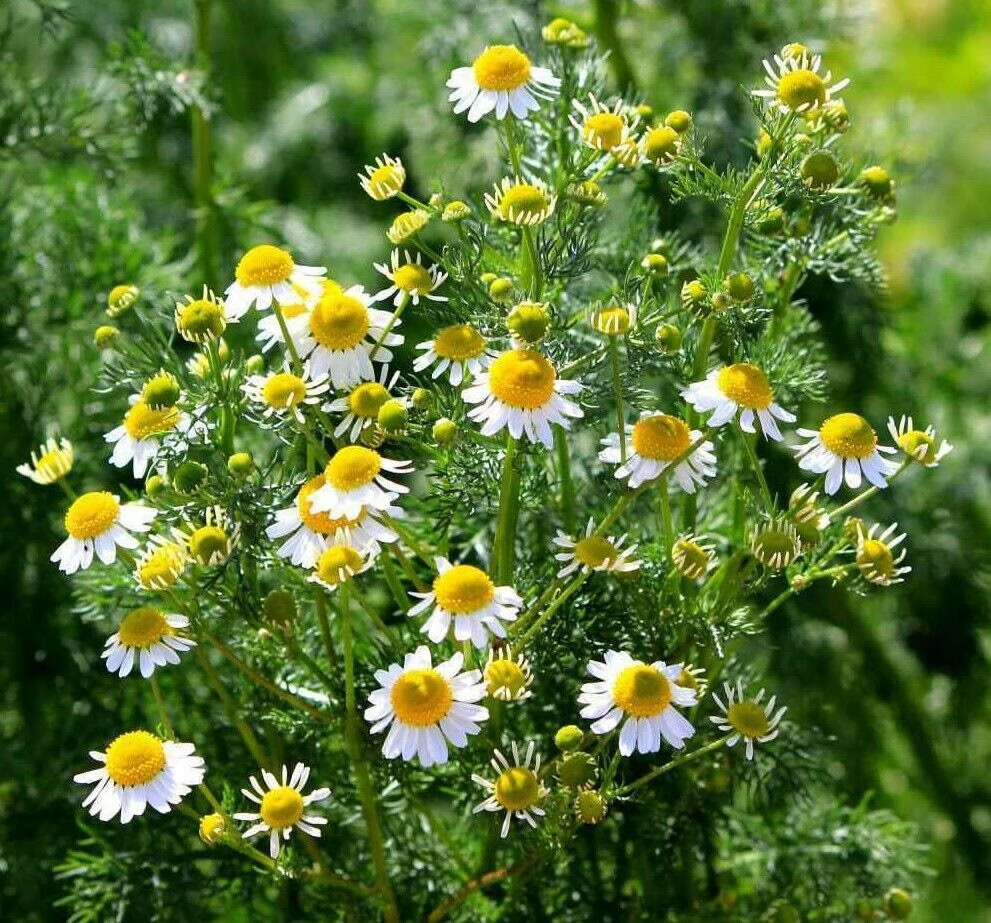
Roman Chamomile
Botanical Name
:
Chamaemelum nobile
Plant Type
:
Herbaceous perennial
Seasons
:
Blooms from summer to early fall
Sun Level
:
Full sun with at least 6 hours of sunlight daily
Ideal Soil Temperature for Planting
:
65–80℉ (18–27℃)
Soil Type
:
Loose, well-drained soil
Hardiness Zones
:
Zones 5–8 (USDA)
Germination
:
About two weeks
P.H. Level
:
5.6–7.5
Water/Irrigation
:
Water growing plants with about an inch per week. Once established, they’re drought-tolerant
Fertilization
:
No need for fertilizer as it can grow in poor soils
Habit
:
Spreading, mat-forming habit
Propagation
:
Division and seeds
Final Plant Height
:
3–6 inches
Spread
:
10–12 inches
Flowers
:
The flowers feature yellow centers encircled by white petals, resembling miniature daisies, and smell like apples
Attracts
:
Honey bees and ladybugs
Uses
:
Ground cover for beds and borders; lawn substitute, and has calming and relaxing properties
Companions
:
Lemon balm, bee balm, hyssop, germander, and horehound
Pruning
:
Lightly trim after flowering to promote dense growth and prevent it from becoming too leggy
Toxicity
:
Generally safe but can be toxic in large amounts
Pests
:
Aphids and thrips
Diseases
:
No serious diseases
Additional Info
:
Divide plants every few years to rejuvenate growth
Botanical Name
:
Chamaemelum nobile
Plant Type
:
Herbaceous perennial
Seasons
:
Blooms from summer to early fall
Sun Level
:
Full sun with at least 6 hours of sunlight daily
Ideal Soil Temperature for Planting
:
65–80℉ (18–27℃)
Soil Type
:
Loose, well-drained soil
Hardiness Zones
:
Zones 5–8 (USDA)
Germination
:
About two weeks
P.H. Level
:
5.6–7.5
Water/Irrigation
:
Water growing plants with about an inch per week. Once established, they’re drought-tolerant
Fertilization
:
No need for fertilizer as it can grow in poor soils
Habit
:
Spreading, mat-forming habit
Propagation
:
Division and seeds
Final Plant Height
:
3–6 inches
Spread
:
10–12 inches
Flowers
:
The flowers feature yellow centers encircled by white petals, resembling miniature daisies, and smell like apples
Attracts
:
Honey bees and ladybugs
Uses
:
Ground cover for beds and borders; lawn substitute, and has calming and relaxing properties
Companions
:
Lemon balm, bee balm, hyssop, germander, and horehound
Pruning
:
Lightly trim after flowering to promote dense growth and prevent it from becoming too leggy
Toxicity
:
Generally safe but can be toxic in large amounts
Pests
:
Aphids and thrips
Diseases
:
No serious diseases
Additional Info
:
Divide plants every few years to rejuvenate growth
Written by Nondiah Khalayi – https://www.linkedin.com/in/nondiah-khalayi/

